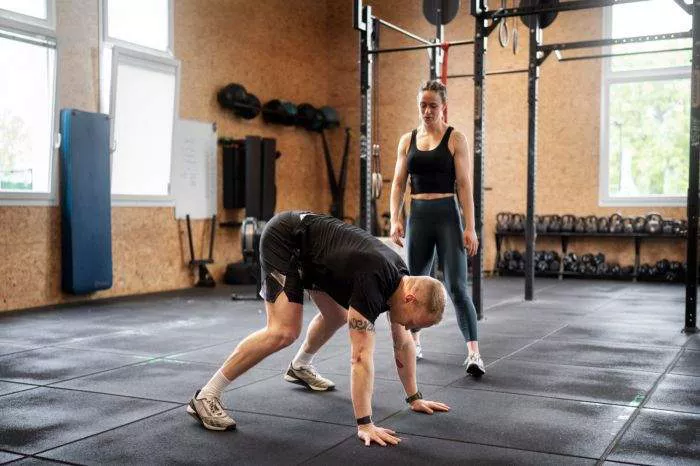Understanding when your abdominal muscles (commonly referred to as abs) are forming requires a combination of observation, physical sensation, and tracking progress over time. As you engage in exercises targeting your core muscles and adopt a healthy lifestyle, several indicators can help you recognize the formation and development of your abs.
Visual Changes:
Visual cues are often the most apparent indicators of abdominal muscle development. As your abdominal muscles strengthen and hypertrophy (increase in size), you may notice changes in the appearance of your midsection. Some visual signs that your abs are forming include:
Increased Definition: As body fat decreases and muscle mass increases, the definition and visibility of your abdominal muscles become more pronounced. You may start to see distinct lines or separations between the individual muscles, such as the rectus abdominis (six-pack muscles) and obliques.
Muscle Definition: Well-developed abdominal muscles exhibit a defined and sculpted appearance, characterized by visible muscle contours and definition even when at rest. As you progress in your training, the outlines of your abs become more prominent, indicating muscle growth and definition.
Reduction in Body Fat: Lowering your body fat percentage is essential for revealing your abdominal muscles. As you engage in regular exercise, particularly cardiovascular activities and strength training, and maintain a balanced diet, you’ll likely experience a decrease in overall body fat, allowing your abs to become more visible.
Improved Posture: Strengthening your core muscles, including the abdominals, can improve your posture by providing better support for your spine and pelvis. As your posture improves, you may notice that your midsection appears tighter and more toned, contributing to the overall appearance of your abs.
Physical Sensations:
In addition to visual changes, you may also experience physical sensations that indicate your abs are forming and becoming stronger. These sensations can vary from a feeling of tightness or soreness to increased stability and control during movements. Some physical signs of abdominal muscle development include:
Muscle Soreness: After performing exercises that target the abdominal muscles, such as crunches, planks, or leg raises, you may experience muscle soreness or stiffness in the abdominal region. This soreness, known as delayed onset muscle soreness (DOMS), is a common response to muscle exertion and indicates that your muscles are adapting and repairing themselves, leading to growth and development.
Increased Strength: As your abdominal muscles become stronger, you’ll likely notice improvements in your ability to perform core-focused exercises with greater ease and control. You may find that exercises like planks or bicycle crunches become less challenging over time, indicating that your muscles are adapting to the workload and becoming more efficient.
Enhanced Stability: Strong abdominal muscles play a crucial role in stabilizing the spine and pelvis during movements and activities of daily living. As your core strength improves, you may experience greater stability and balance, both in static positions (e.g., standing or sitting) and dynamic movements (e.g., walking, running, or lifting weights).
Tighter Sensation: As your abdominal muscles tighten and contract during exercise, you may feel a sensation of tightness or engagement in the abdominal region. This feeling of tightness can be particularly noticeable when performing exercises that require you to brace or engage your core muscles, such as squats, deadlifts, or overhead presses.
Progress Tracking:
Tracking your progress is essential for monitoring the development of your abs over time and identifying areas for improvement. By keeping a record of your workouts, measurements, and physical changes, you can assess your progress objectively and adjust your training program accordingly. Here are some methods for tracking your abdominal muscle development:
Measurements: Use a tape measure to track the circumference of your waist or the specific dimensions of your abdominal muscles. Measure regularly (e.g., weekly or monthly) to monitor changes in size and circumference over time. Keep in mind that changes in waist circumference may not solely reflect changes in muscle mass but also changes in body fat.
Progress Photos: Take regular photos of your midsection from different angles to visually document changes in muscle definition and appearance. Compare photos taken at different intervals (e.g., every few weeks or months) to observe changes in muscle tone, definition, and overall appearance.
Body Composition Analysis: Consider using methods such as body fat calipers, bioelectrical impedance analysis (BIA), or DEXA scans to assess changes in body composition, including body fat percentage and muscle mass distribution. These tools can provide more precise measurements of muscle and fat tissue changes than visual observation alone.
Strength and Performance: Monitor improvements in your strength, endurance, and performance during core-focused exercises and functional movements. Keep track of key performance indicators such as the number of repetitions, duration of holds, or amount of weight lifted during exercises targeting the abdominal muscles.
The Bottom Line
Incorporating a combination of visual observation, physical sensations, and progress tracking methods can help you recognize when your abs are forming and developing. Remember that abdominal muscle development is influenced by various factors, including genetics, training intensity, nutrition, and recovery. Focus on maintaining a consistent exercise routine, following a balanced diet, and prioritizing recovery to optimize your progress and achieve your desired abdominal muscle development goals.
Related Topics:
Ultimate Treadmill Training Plan for Effective Weight Loss
Treadmill vs. Spinning: Comparing Efficiency for Weight Loss


